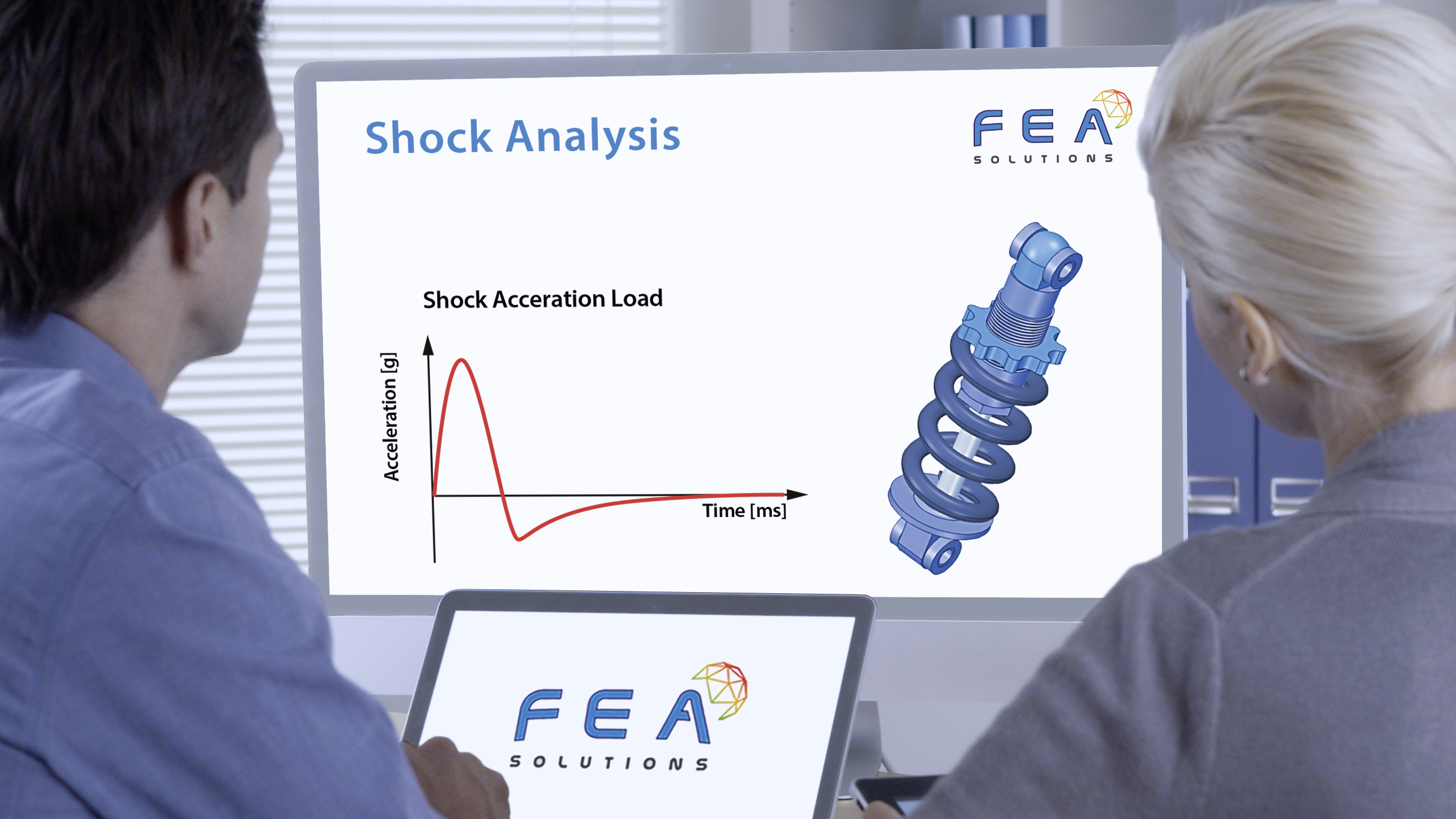
10 Jul Shock Analysis
Shock analyses are used to evaluate the system response to a load which varies over a very small time, such as an explosion.
There are several methods to carry out a Shock Analysis in FEA:
- Static Analysis (https://fea-solutions.co.uk/static-vs-dynamic-analysis/)
- Dynamic Design Analysis Method (DDAM) (https://www.fea-solutions.co.uk/ddam/)
- Linear Transient Dynamic Analysis (https://fea-solutions.co.uk/linear-transient-dynamic-analysis/)
- Non-linear Transient Dynamic Analysis (https://fea-solutions.co.uk/non-linear-transient-dynamic-analysis/)
The static analysis is the most simplistic approach, where a constant acceleration is applied. The analysis results might not be very realistic, because the excitation of the structure’s natural frequencies and its resulting amplification of the loads is not included.
The advantage of the DDAM is that it doesn’t require a shock curve (which might not be available at the time of the analysis, for example during the pre-design phase), but nevertheless does include the effects of the structure’s dynamic response on the stresses. The applied loads are calculated based on Modal Analysis results, either calculated by hand or hard coded in the FEA software.
For both the linear and non-linear transient dynamic analyses, shock curves are required as an input. A shock curve is a load (usually acceleration) vs time graph which is applied to the system.
For transient analyses, all results are time dependent, and the usual results can all be obtained, such as stresses or strains.
Please call us today on +44 (0)1202 798991 for any engineering analysis requirements you might have.
